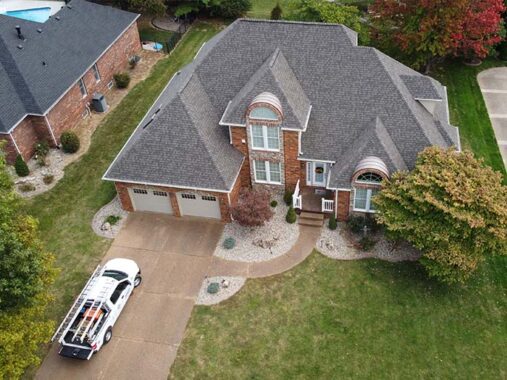When in the beginning stages of construction of a commercial property or personal residence, one big question is to determine the type of roof best suited for your needs. Most often, the choice is between a flat or pitched roof. So what’s the difference? A flat roof is just as it sounds – a roof which is almost completely level while a pitched roof slopes downwards. Both have their own advantages and once you understand them, you can better make a decision on which will be best suited for your project.
Flat Roof
- Cost-Effective
- Easy Installation
- Easy Maintenance
A flat roof is most commonly seen on a commercial or business building. The material used for a flat roof consists of a rubber membrane and can be cheaper than shingles that are used for a pitched roof. Generally, flat roofs are cheaper than pitched roofs because they require less material and less time installing. The flat surface also allows for extra space for storage of larger items such as HVAC systems. While flat roofs can be beneficial due to the lower costs and quicker installation, they also can require more maintenance of their drainage system. Since the roof has little to no slope, it is easier for water to collect at the top of the roof, causing the potential for leaking. Maintenance work is also easier and a bit safer because it allows for easier access to the roof.
Pitched Roof
- Additional Storage Space
- Increased Ventilation
- Low Maintenance
A pitched roof is most commonly seen on residential homes. This type of roof generally uses layers of shingles, commonly made from recyclable materials. Because of the angle of the pitched roof, it can provide additional space, such as an attic, at the top of the house. This increases the amount of storage space in the home. Also, a pitched roof allows for better ventilation throughout the home. Better air circulation can cut down on heating and cooling costs – saving money on your monthly utility bill! Generally, there is low maintenance to a pitched roof because the slope helps guide water to the drainage system, avoiding any water to collect at the top of the roof. Even though a pitched roof can mean lower maintenance than a flat roof, replacing damaged shingles is unavoidable. Routine maintenance is key to maintaining the integrity of the roof.
Making the decision between a flat roof or a pitched roof can depend on what you are looking to achieve with your project. We at Tesson Roofing & Exteriors can help you understand the differences and advantages of both so that you can make the best decision based on your current project goals. If you are interested in learning more about our company and about the different types of roof installation, please contact our office at 314-932-1042! We will take time to help you understand all of your options and all of the benefits they can provide!
